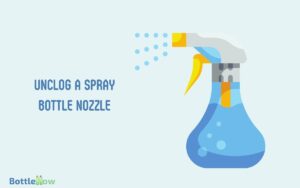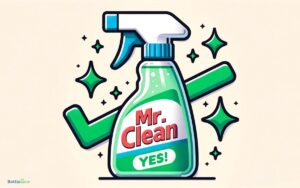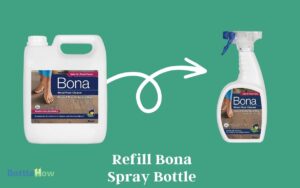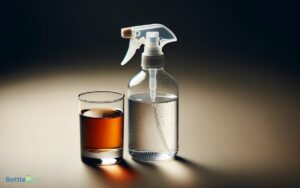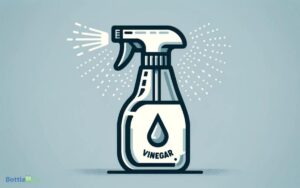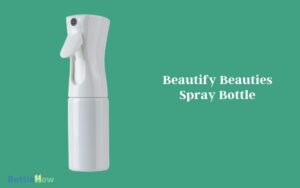Spray Bottle Parts Name: A Complete List!
In your spray bottle, the trigger mechanism is tailored for comfort and precise control, offering responsive feedback with every press.
The nozzle adjusts, twisting to switch between mist and stream, allowing you to customize the intensity for your needs.
Inside, the pump and piston assembly is a marvel of design, converting your manual force into hydraulic pressure efficiently while preventing leaks.
The reservoir or bottle body, typically made from durable plastics like PET or HDPE, holds the liquid and is shaped for easy handling.
The dip tube reaches into this reservoir, ensuring every drop is utilized. Discover more about how these components work together to enhance your experience.
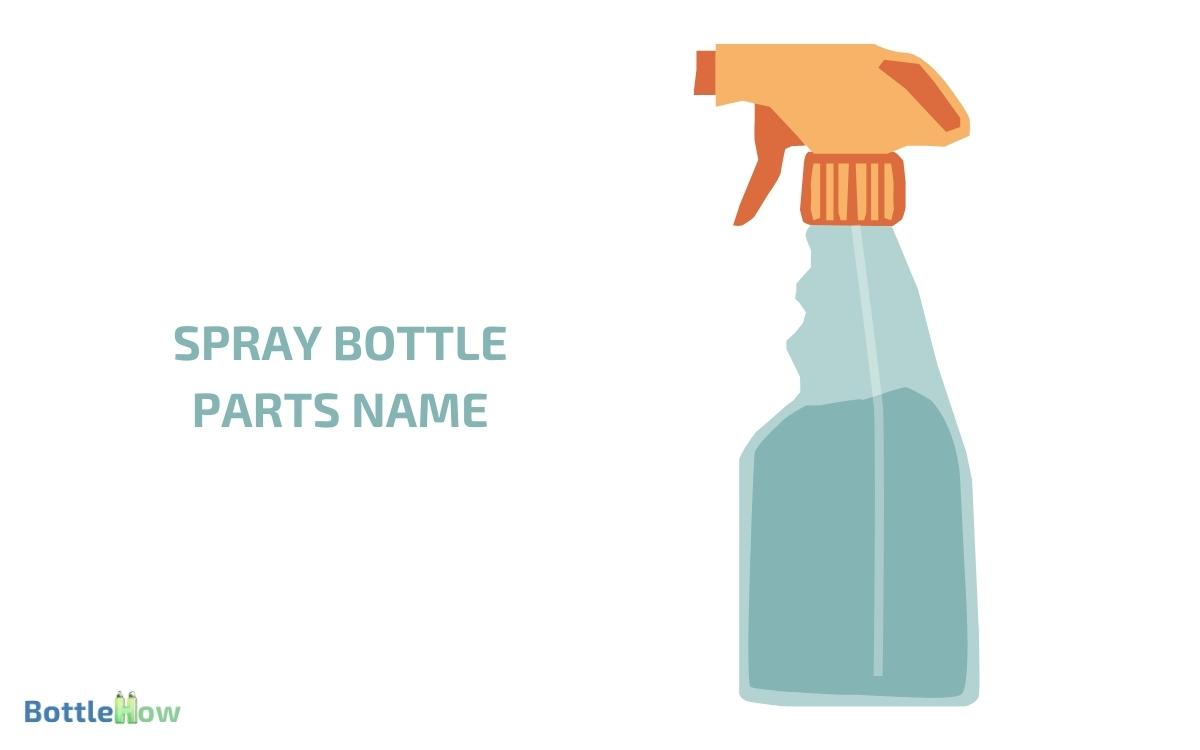
Listing the Common Parts Found in a Spray Bottle
| Part Name | Description |
|---|---|
| Nozzle/Trigger | Control mechanism for releasing the spray. |
| Spray Head | Assembly containing the nozzle, controls the spray pattern. |
| Tube | Flexible plastic tube extending from the nozzle into the liquid. |
| Pump Assembly | Mechanism pressurizing the liquid to create the spray. |
| Cylinder | Houses the piston in the pump assembly. |
| Piston | Moves to create pressure when the trigger is pressed. |
| Seal/Gasket | Creates a tight seal between pump assembly and bottle, preventing leakage. |
| Bottle | Container holding the liquid to be sprayed. |
| Cap | Top cover of the bottle, may include nozzle or be removable for refilling. |
| Dip Tube | Extends into the liquid, drawing it up to the nozzle. |
| Check Valve | Prevents liquid from flowing back into the bottle after pumping into the spray mechanism. |
| Spring | Helps return the piston to its original position after being pressed. |
| Handle | Attached to the trigger or pump assembly for easier grip and operation. |
| Filter | Mesh or screen at the end of the tube, prevents clogging of the nozzle. |
| Adjustable Nozzle | Allows changing the spray pattern from mist to stream. |
| Safety Lock | Prevents accidental spraying by locking the trigger. |
| Strain Relief | Prevents kinking or damage to the tube where it connects to the nozzle or pump. |
Key Takeaways
The Trigger Mechanism
The trigger mechanism, essential for precise control, lets you effortlessly spray with a simple squeeze.
This component is a marvel of design, integrating ergonomics with efficiency. It’s tailored to fit your hand comfortably, reducing strain during extended use.
You’ll find the resistance perfectly balanced; it’s neither too stiff nor too loose, providing a responsive feedback every time you press.
This means you can manage liquid output with remarkable precision, ensuring that you deliver just the right amount of product, minimizing waste and maximizing effectiveness.
Such attention to detail makes it ideal for tasks where accuracy is paramount—whether you’re nurturing delicate plants, cleaning sensitive surfaces, or attending to clients’ needs in a salon. This mechanism isn’t just a part of the tool; it’s the key to its functionality.
Nozzle and Spray Adjustment
Moving beyond the trigger mechanism, let’s explore how the nozzle and spray adjustment can further refine your spraying experience.
The nozzle, a critical component, determines the spray pattern and intensity. You’ll find that by rotating the nozzle tip, you can switch between a fine mist and a direct stream.
This feature allows you to tailor the output to meet specific needs, whether you’re gently misting plants or targeting a stream for tough cleaning jobs.
Adjusting the spray setting isn’t just about convenience; it’s about precision and efficiency in your tasks.
By understanding and manipulating these settings, you’re equipped to serve more effectively, ensuring peak performance and resource conservation.
Pump and Piston Assembly
Diving deeper into the spray bottle’s mechanics, you’ll encounter the pump and piston assembly, essential for generating the pressure needed to expel liquid.
This component is a true workhorse, ingeniously converting your manual force into hydraulic pressure.
As you press the trigger, the piston—a small yet powerful plunger—moves within a cylinder. This action compresses the air and liquid above it, creating pressure.
Each part of this assembly is crafted to guarantee durability and efficiency. The precision with which the piston fits into the cylinder prevents air and liquid leaks, maximizing the force exerted with each spray.
Understanding this mechanism enhances your ability to maintain or troubleshoot the spray bottle, ensuring it always performs at its best for your serving needs.
Reservoir or Bottle Body
Your spray bottle’s reservoir, or bottle body, holds the liquid you’ll dispense, designed for both durability and ease of use.
Typically crafted from robust plastics like PET or HDPE, these materials guarantee your bottle withstands daily wear while being lightweight enough for effortless handling.
The design isn’t just important; it’s user-centric, often featuring a transparent or semi-transparent finish so you can easily monitor the liquid level.
This is essential in maintaining your efficiency and effectiveness in tasks that require precision, like cleaning or gardening.
Additionally, the shape of the bottle is ergonomically optimized to fit comfortably in your hand, reducing fatigue during extended use.
This thoughtful design empowers you to serve others more effectively, enhancing both your performance and their satisfaction.
Dip Tube and Suction
Once the reservoir holds the liquid, the dip tube and suction mechanism play a key role in drawing it up for dispersal.
Here’s how this important duo works to make sure you can efficiently serve others through various applications:
- Length Adaptability: The dip tube extends from the sprayer head down into the reservoir. It’s typically tailored to the bottle’s height, guaranteeing it can reach the bottom to utilize all the liquid.
- Material Durability: Made from resistant plastics, the tube withstands corrosive substances and frequent use, ensuring reliability and long-term service.
- Suction Efficiency: As you press the trigger, the suction mechanism creates a vacuum, effectively pulling the liquid up through the dip tube.
- Precision Delivery: This setup enables precise control over the amount of liquid dispensed, minimizing waste and enhancing your ability to serve effectively.
Seals and Gaskets
Seals and gaskets in your spray bottle play a vital role in providing an airtight closure, preventing leaks and maintaining the integrity of the spray mechanism.
These components are essential, especially if you’re using the spray bottle to distribute products that help others, such as cleaning solutions in homes or sanitizers in community spaces.
They are typically made from rubber or silicone, materials chosen for their durability and flexibility.
Here’s a quick guide to understand the types and functions of seals and gaskets in your spray bottle:
| Part | Material | Function |
|---|---|---|
| O-ring | Rubber | Seals the connection between the spray head and the bottle |
| Washer | Silicone | Provides a tight seal at the base of the pump |
| Gasket | Rubber | Ensures no leakage from the cap |
| Seal | Silicone | Prevents air from entering the bottle, maintaining pressure |
| Spacer | Rubber | Aids in aligning and securing the pump mechanism |
Each part is essential for maintaining the top-notch performance of your spray bottle.
Conclusion
In the world of spray bottles, each part is like an unsung hero, quietly conquering the chaos of cleaning! From the sturdy trigger to the precise nozzle, every component works together to deliver the perfect spritz. Whether for household cleaning or plant care, different types of spray bottles cater to various needs with unique designs and functions. Some offer a fine mist for delicate surfaces, while others provide a powerful stream for tougher jobs.
The trigger mechanism, a true maestro, orchestrates an elegant spray with a simple squeeze. The nozzle, ever versatile, shifts patterns like a chameleon changes colors.
And don’t get me started on the pump and piston—without them, you might as well throw in the towel now!
Remember, every minuscule part plays a monumental role in turning your everyday spritz into a cleaning revolution.

